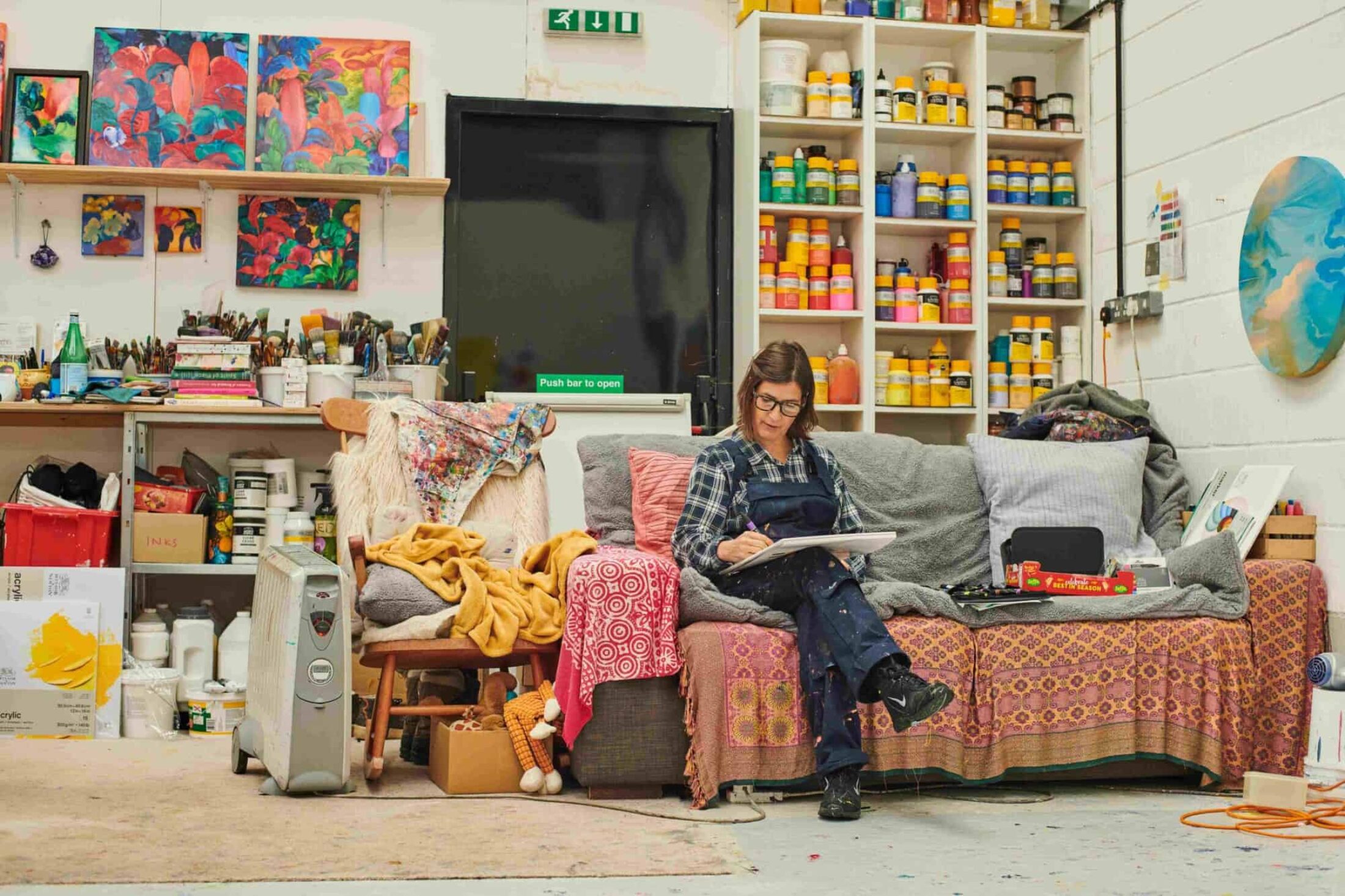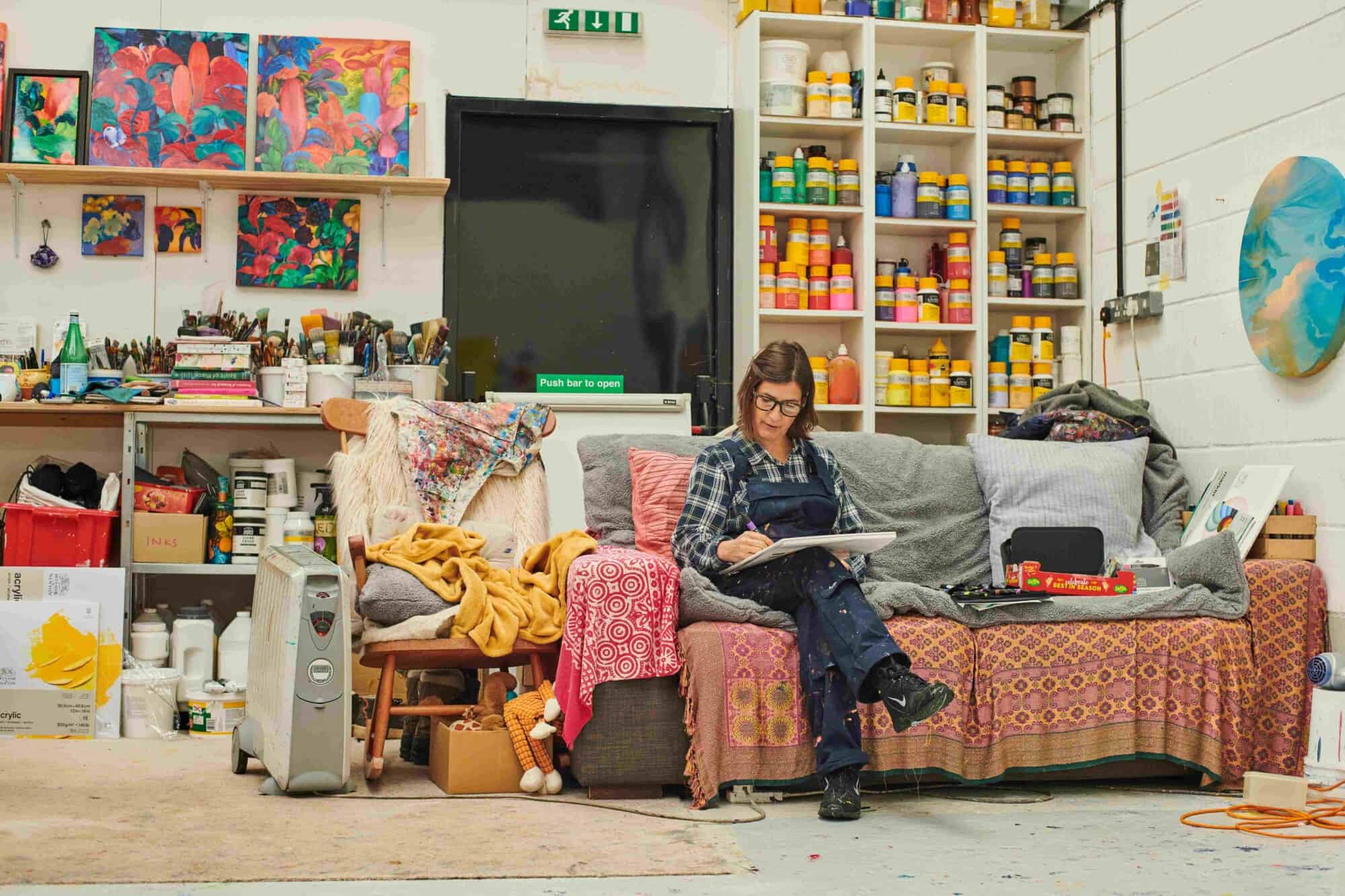A unique charity is bringing art to England’s psychiatric hospitals, transforming sterile spaces into centers of creativity
It is almost ten years since Tim A. Shaw and his partner Niamh White visited a close friend who was admitted to a psychiatric hospital.
“It was a really inhuman, cold, clinical space,” he recalls. “Very bare. Quite claustrophobic. The opposite of where someone who is really struggling should be. It felt like our friend had been abandoned.”
What would happen, the two wondered, if they could use their experiences in the art world – Shaw is an artist, White a curator – to “invite artists and transform the space? We’re used to making spaces beautiful for other people. It felt like we could apply that to psychiatric hospitals.”
What began as a one-off project to bring creativity, color and joy to a single mental health facility – the Phoenix Unit in South West London and St George’s Mental Health NHS Trust – soon expanded into Hospital Rooms, a nationwide mental health charity. Shaw and White have since created vibrant, site-specific artworks in 25 hospital rooms, working with dozens of curators, artists, patients and NHS staff.
The commissioning and development process is different in each location, allowing the artists involved to respond to their circumstances. For example, for a project currently taking place in mental health hospitals in Redruth and Bodmin in Cornwall, “it feels really important that most of the artists are based in Cornwall,” explains Shaw.
Other projects set in child and adolescent psychiatric settings or in facilities specialising in dementia care have attracted artists who have a personal connection to these particular challenges. “We work with a lot of artists with different aesthetics and different voices because it makes each project feel really alive, collaborative and different,” says Shaw.
Patients and staff are active participants in many projects: they not only take part in workshops as part of the research and development process, but also pick up brushes or pens themselves. “We realised that there needs to be a wide range of approaches to art. There shouldn’t just be one voice and one vision,” says Shaw. “We have a responsibility to give people a choice.”
A project at the Hellingly Centre in East Sussex in 2019 saw artists – including Shaw himself – work alongside patients to create the Hellingy Tapestry. Inspired by the region’s links to the Bayeux Tapestry and the Battle of Hastings, this epic mural took shape over the course of six months, allowing patients to see themselves and their stories reflected in the finished work.
“The projects don’t just change the environment on the psychiatric wards,” explains Shaw. “They provide an opportunity for psychiatric patients, artists and NHS staff to work together and be part of a creative problem-solving exercise. In the best cases, the culture and energy of a ward can also change.”
Hospital Rooms aims to reach 180,000 people diagnosed with a serious mental illness over the next three years
Painter Orlanda Broom was one of five artists commissioned by Hospital Rooms to create artwork for Rosebud, a psychiatric rehabilitation unit run by the Kent and Medway NHS and Social Care Partnership Trust. Their involvement has been made possible through support from Winsor & Newton, who have supplied Hospital Rooms with art materials and raised funds for the charity since the first project.
“Orlanda is something we’ve wanted to work with for a long time,” says Shaw. “She creates these incredible, fantastical landscapes and we thought, ‘What a great thing to bring something spectacular and natural into a psychiatric hospital – where you often spend a lot of time indoors.'”
The vibrant murals Broom painted in the center’s living room serve as “windows into this other world,” Shaw adds.

Orlanda Broom paints luminous images of lush and floral landscapes as well as flowing and abstract works. Image: Winsor & Newton
In addition to its on-site work in mental health settings, Hospital Rooms now runs the Digital Art School. This series, which began during the pandemic when the charity was unable to access its in-person projects, sees renowned artists leading online art classes in everything from clay and fashion illustration to drawing and collage. The materials used in the tutorials have all been donated by Winsor & Newton, reflecting the company’s belief in the power of art to stimulate and heal through creativity.
The Digital Art School’s courses are open to all patients and to ensure they are truly accessible, the charity sends boxes of high-quality art supplies to all 750 English NHS inpatient mental health care facilities. “Winsor & Newton donated huge amounts of paint, paper, brushes, pastels, ink, markers, stencils and stickers – it took us six weeks to pack all those boxes with a whole team,” explains Shaw.
We are used to making spaces beautiful for other people – it felt like we could transfer that to psychiatric facilities as well
“When you go into stationary wards you often find cheap poster paint and dried out brushes. It’s really satisfying to use really beautiful materials to create something interesting or potentially beautiful.”
The extent of the Digital Art School is ambitious. All 58 mental health facilities in the English NHS have signed up to take part in the programme. Hospital Rooms aims to reach 180,000 people diagnosed with a serious mental illness over the next three years. “We always wanted Hospital Rooms to enable people in mental hospitals to participate in something creative, and this is a good step in that direction,” says Shaw.
The calibre of artists involved and the quality of materials provided are an indication that the charity is pursuing the need to destigmatise mental illness and treatment spaces. “Any art school in the country would be lucky to have one of our Digital Art School artists as a lecturer. It’s not an inferior version because it’s about something in the hospital.”
Main image: Winsor & Newton
Support solutions in 2024
Positive News is helping more people than ever to have a balanced and uplifting view of the world. While other news media are doom-mongering, our solutions journalism supports your wellbeing and empowers you to contribute to a better future.
But our reporting comes at a price, and as an independent, nonprofit media company, we rely on the financial support of our readers. If you value our work and can afford it, please support our team with a regular or one-off contribution.
Make a one-off donation from just £1, or join over 1,400 others who give an average of £3 or more a month. You’ll directly fund the production and distribution of our stories, and help our solutions journalism reach many more people.
Join our community today and together we will change news forever.
Support Positive News




